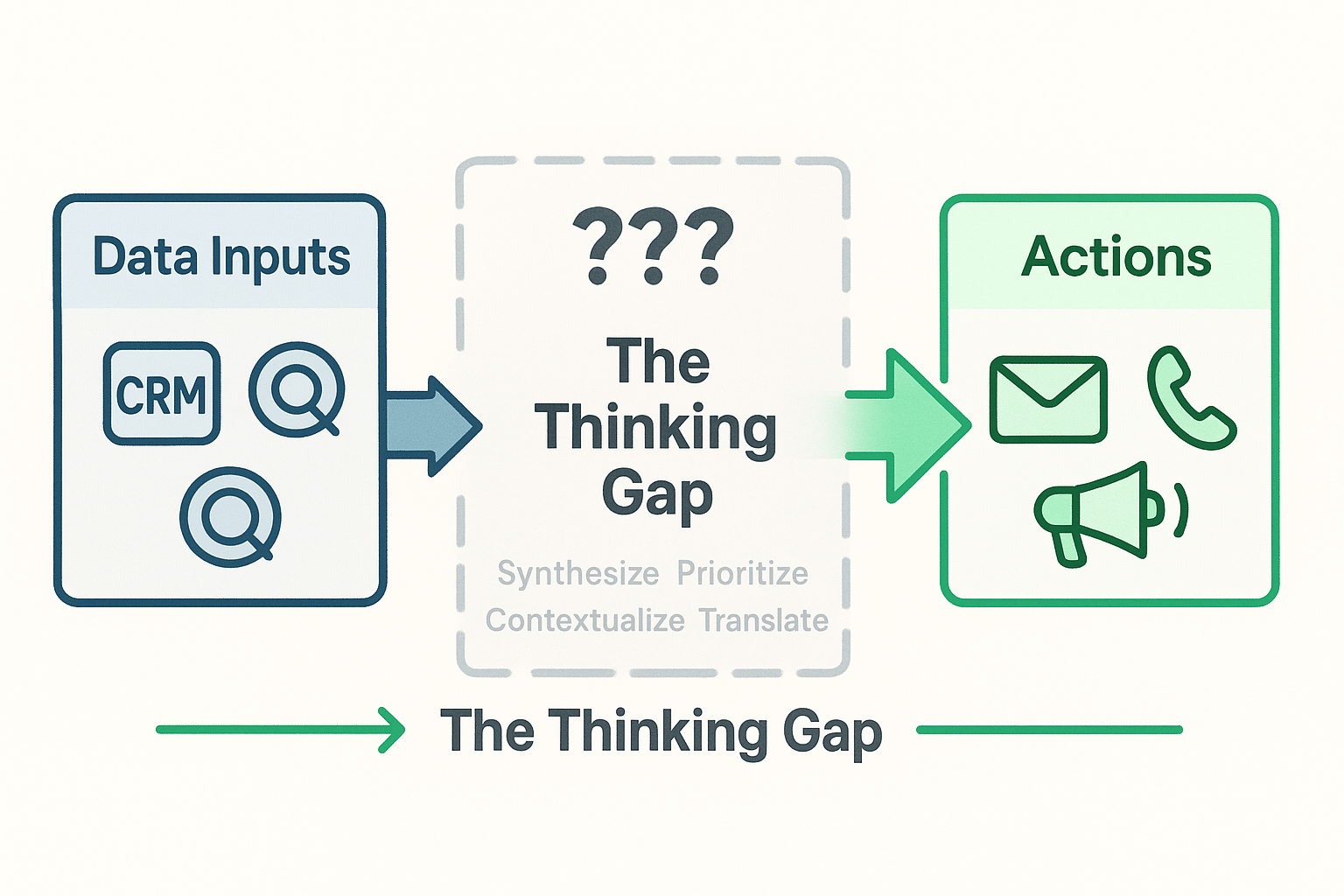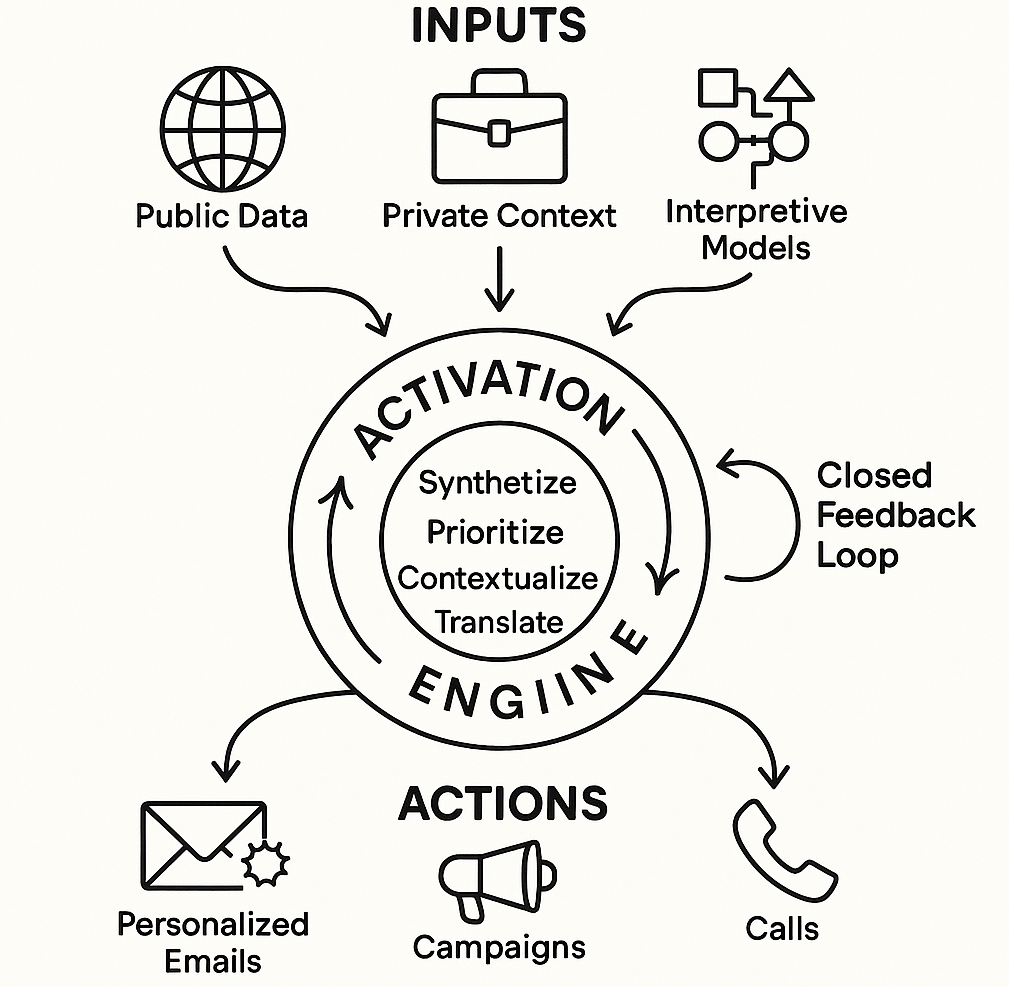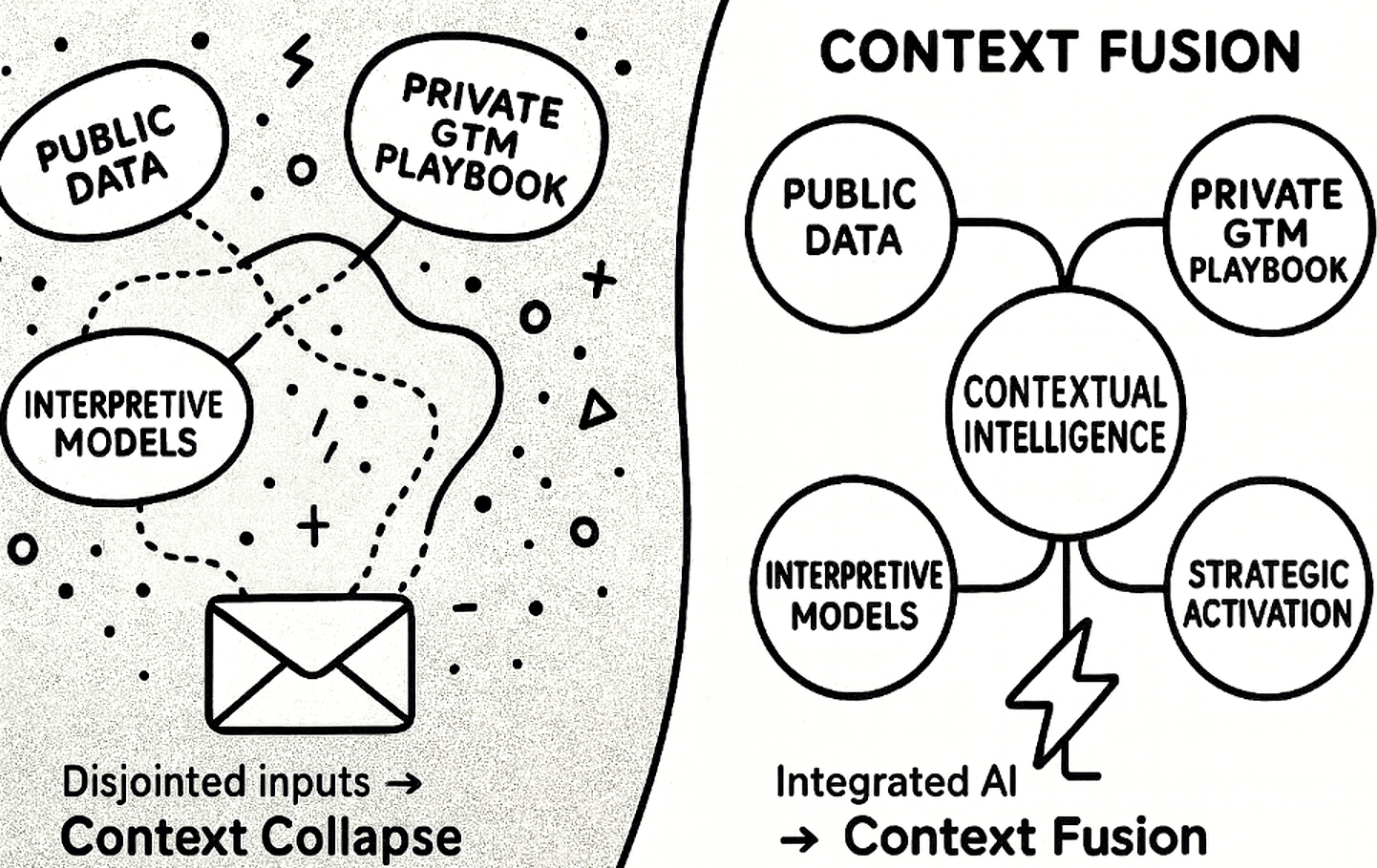Most go-to-market teams now use AI across prospecting, research, and outbound. The typical stack can summarize websites, pull public facts, and generate competent emails - capabilities that have become table stakes.
But sales teams don't need more data. They need context.
This first wave of generative AI has crested, leaving the GTM landscape filled with tools powerful in theory, yet hollow in practice. Instead of the promised team of tireless analysts, we've ended up with outreach that's grammatically flawless yet strategically vacant.
In many organizations, marketing and enablement teams (rightfully) distrust AI-generated outreach due to risks of off-brand messaging, generic pitches, or factual errors slipping through. Running controlled experiments or measuring AI output against baselines is nearly impossible, as these systems lack the feedback loops needed to show what's effective.
This isn't a failure of AI itself, but of its underlying architecture. A generic LLM is a brilliant oracle with severe amnesia. It can regurgitate endless public data on the internet, yet is cut off from the private, strategic reality of your business, and doesn’t possess the framework to bridge the two.
In other words, today’s GTM AI operates in a state of Context Collapse - the chasm between information and intelligence, and the fundamental reason GTM AI hasn’t yet delivered on its promise.
The race to win the next era of GTM won't be won by the company with more data or a marginally better algorithm. It will be won by the company with the superior architecture for synthesis - one that connects disparate data points into a unified knowledge graph that understands what actually matters to buyers.
This blog lays out the architecture of that moat in practical terms.
Closing the Thinking Gap
Every GTM process follows a consistent but often overlooked pattern:
Data → ??? → Action

Data: Your raw input, typically consisting of CRM records, intent signals from platforms like 6sense, enrichment from Clay or ZoomInfo, and timely news alerts about industry or company events.
Action: Your tangible output → email sequences via Outreach, calls through Orum, targeted ad campaigns, etc.
The critical yet neglected step is the "???", or the "Thinking Gap." In this essential stage, humans manually & painstakingly...
Synthesize... "This company had a bad earnings call, is hiring SDRs, and their VP just posted about 'tech bloat.' What does it mean?"
Prioritize… "Of these signals, which is most important?"
Contextualize… "How does this relate to our product and relevant case studies?"
Translate… "How do I convert strategic thought into a compelling email?"

In reality, the Thinking Gap unfolds as a decision tree guided by human judgment and context.
Take, for example, an SDR selling a cybersecurity solution. She begins researching a prospect and finds they've recently grown their engineering team significantly - signalling infrastructure security needs.
Digging deeper, she spots a LinkedIn post from the company's new Director of IT Security, openly concerned about endpoint vulnerabilities among remote workers. It takes her a few minutes to decide whether to use her company’s value proposition & supporting case studies for infrastructure protection vs endpoint security.
Next, she imports the lead into Salesforce, only to learn another rep spoke briefly with the prospect’s Head of Compliance two months ago, who cited budget constraints, and is already actually a customer on a different product suite.
With this new context, her strategy shifts again: Does she incorporate mention of budget constraints, double down on the urgency of endpoint risks, or weave these threads into a cohesive narrative addressing both?
Each piece of context forces real-time recalibration - changing priorities, messaging, and outreach strategy.
This is the work of connecting dots - taking scattered signals (hiring patterns, executive posts, CRM history, past conversations) and synthesizing them into buyer-relevant context. Having access to each data point individually isn't enough. The value comes from understanding how they relate to each other, and to your specific sales strategy.
What's to Come

Current GTM tools, while light-years better than their predecessors, solve isolated pieces:
- Clay: Excellent at data workflows but leaves "thinking" up to the user.
- Lavender/Regie: Great at refining final outreach copy but disconnected from strategic context.
- Amplemarket/Unify: Bundled data-to-action but limited strategic synthesis.
ROI doesn’t come from the tool with the most data, that writes the slickest copy, or that has the most sophisticated workflow tools - it's about the shortest path from insight to activation.
To close the Thinking Gap, GTM teams must build around an 'Activation Engine' powered by a proprietary knowledge graph - one that connects public signals, private CRM data, your sales playbook, and past conversations into a unified system that both surfaces relevant information and proactively guides strategic choices at each branching decision.
The richness of this knowledge graph - how well it connects context across sources - becomes the moat. Not the volume of data, but the architecture for synthesis.
That means giving SDRs an immediate answer to "Given everything we know, what's the single best message to send this prospect, right now?"
The future belongs not to those who accumulate context, but to those who master activating it.




